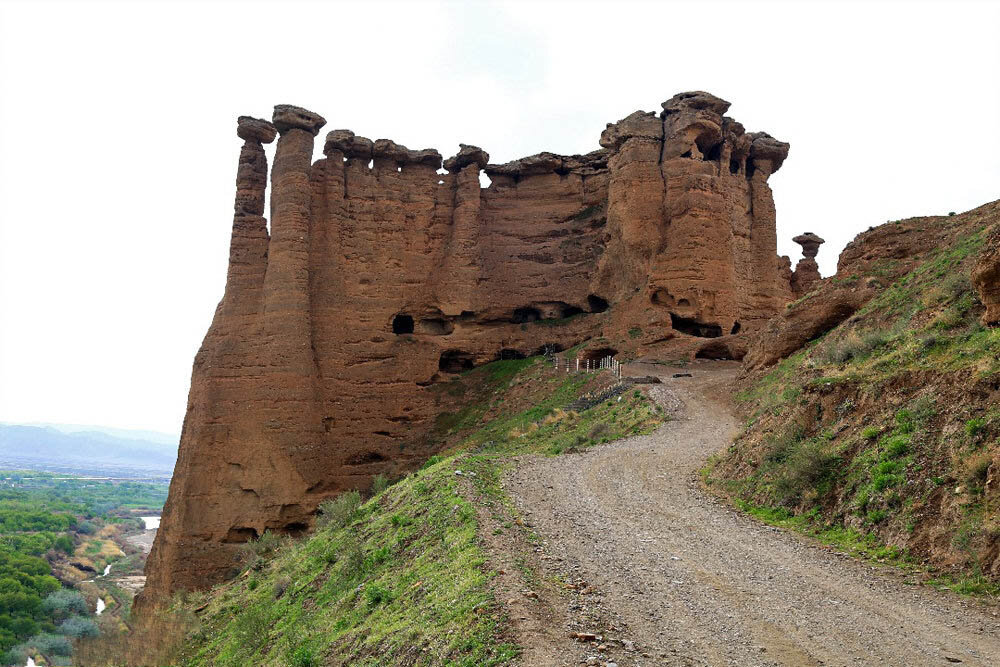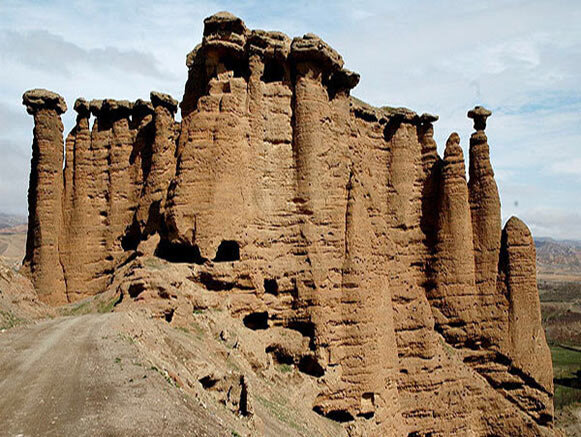Jinn Chimney: a unique natural phenomenon in west central Iran

TEHRAN – Situated in Mahneshan county of Zanjan province, west-central Iran, the Jinn Chimney—known locally as Doodkesh-e Jinn—is an extraordinary natural formation that has become a popular tourist attraction.
In geology, such formations are referred to as “hoodoos,” which are tall, thin spires of rock topped by a larger stone, resembling a mushroom-like shape. The structure gives the impression of a narrow minaret or chimney with a stone cap balanced on top.
These fascinating shapes are the result of prolonged erosion, where sedimentary rocks and softer layers are worn away, leaving tall pillars with varying thickness and height. Typically, a harder layer or rock sits atop the column, protecting the underlying structure from erosion. The unusual appearance of these formations has inspired locals to call them Jinn Chimneys or Elf Thrones, reflecting old beliefs that attributed such strange natural phenomena to supernatural beings like jinns or elves.

While hoodoos are geological wonders found worldwide—most famously in the Bryce Canyon region of the United States, and also in Turkey, Serbia, Taiwan, and parts of the French Alps—Jinn Chimneys hold a distinct place in Iranian tourism.
Whether viewed as a geological curiosity or a mystical wonder, the Jinn Chimney in Mahneshan offers visitors a glimpse into the unique beauty shaped by nature over time.
AM
Leave a Comment